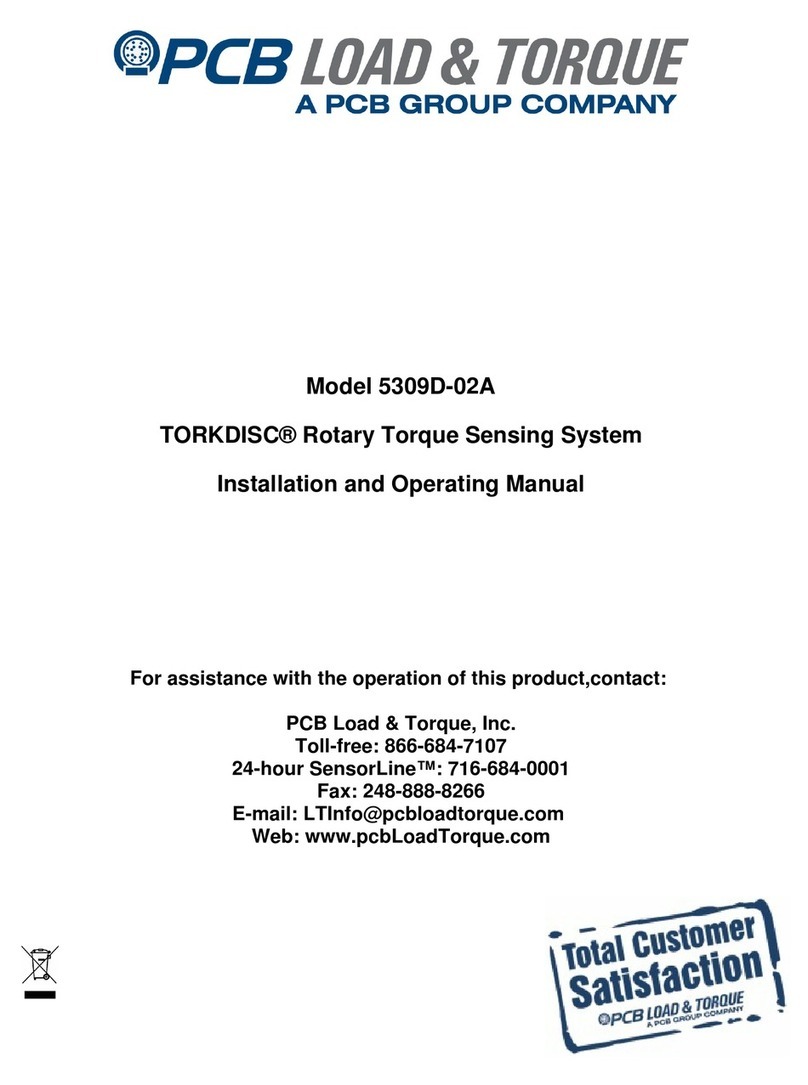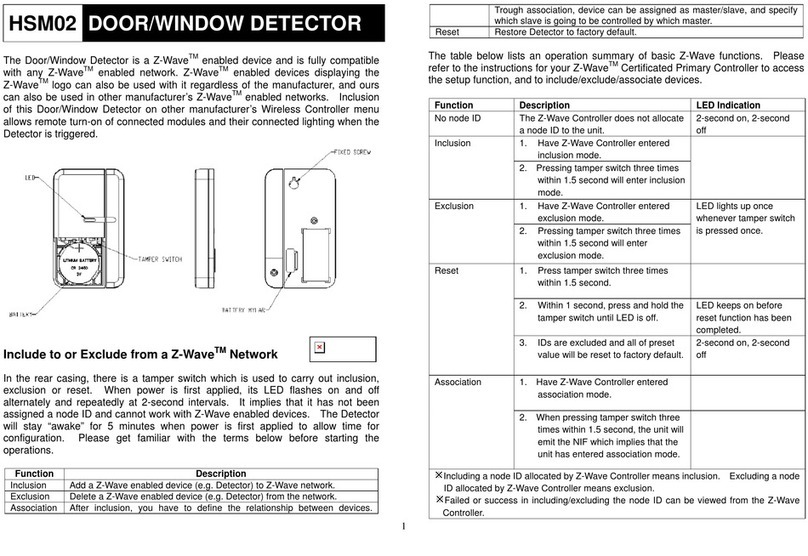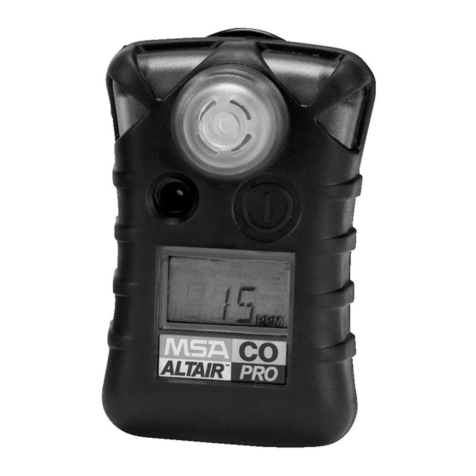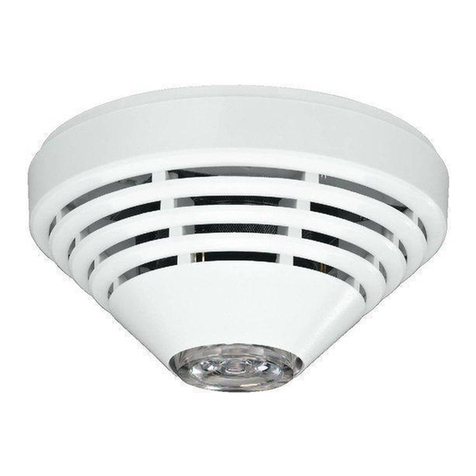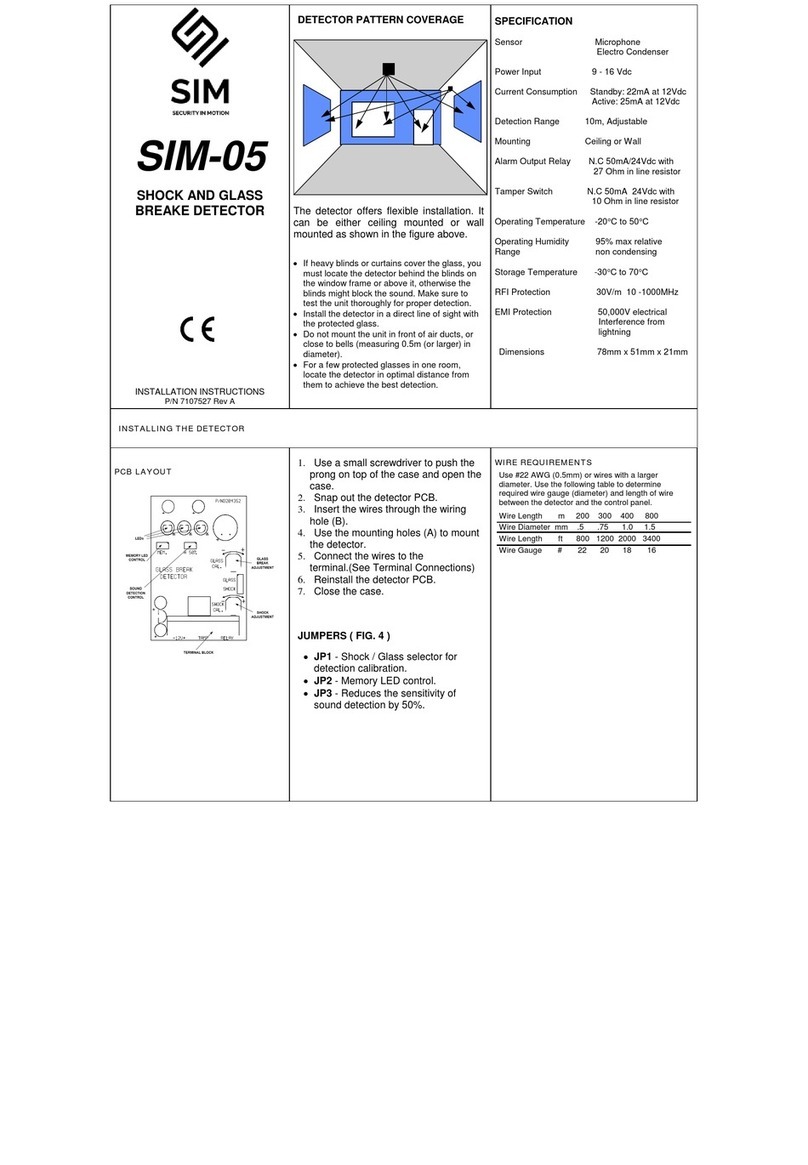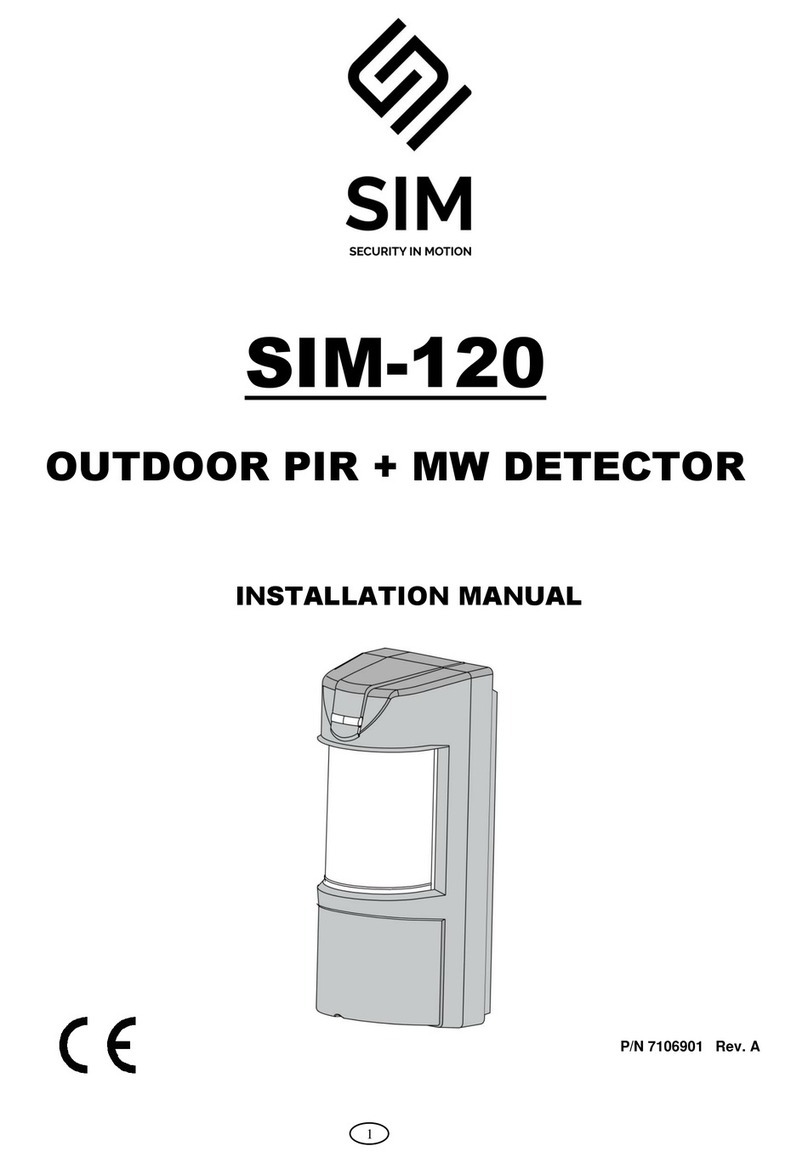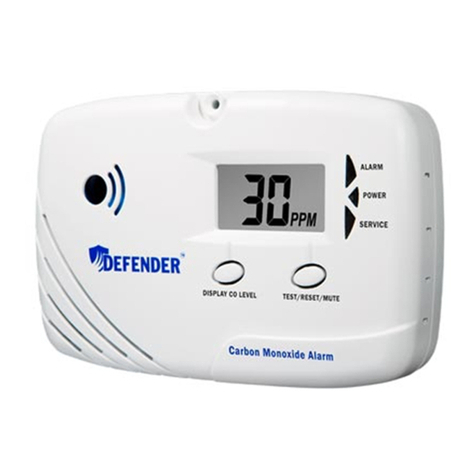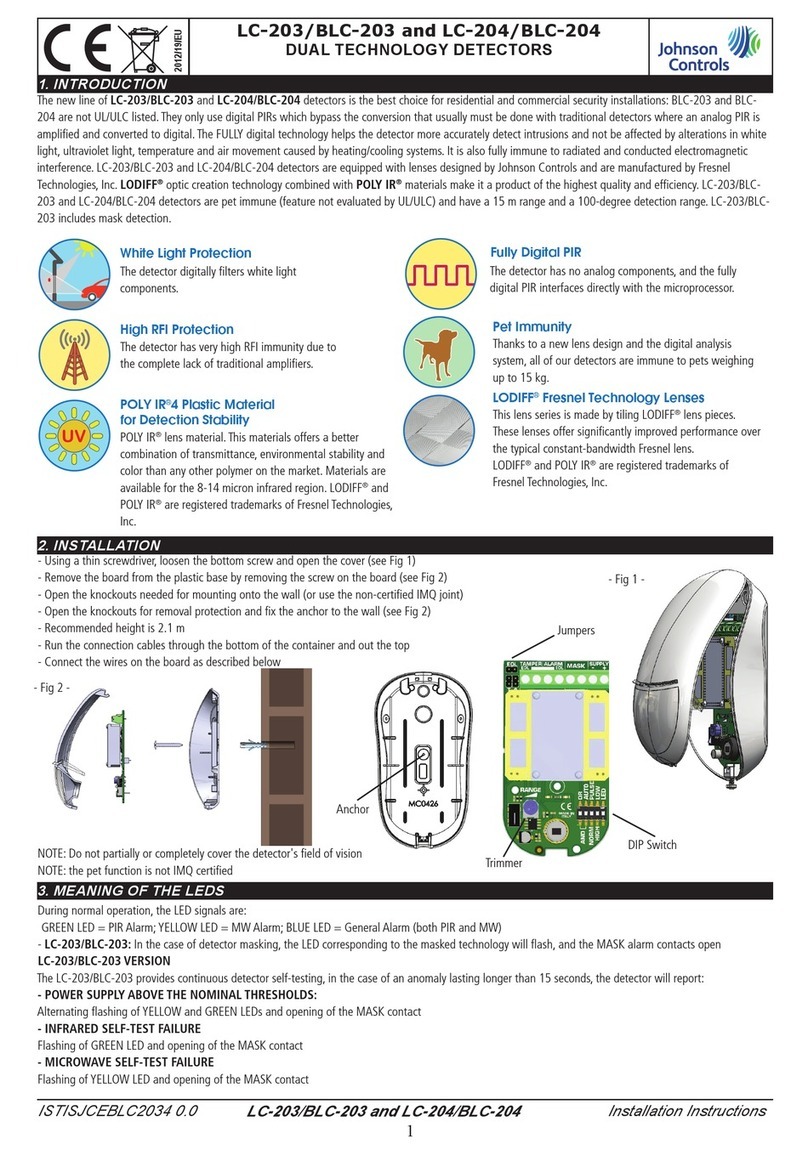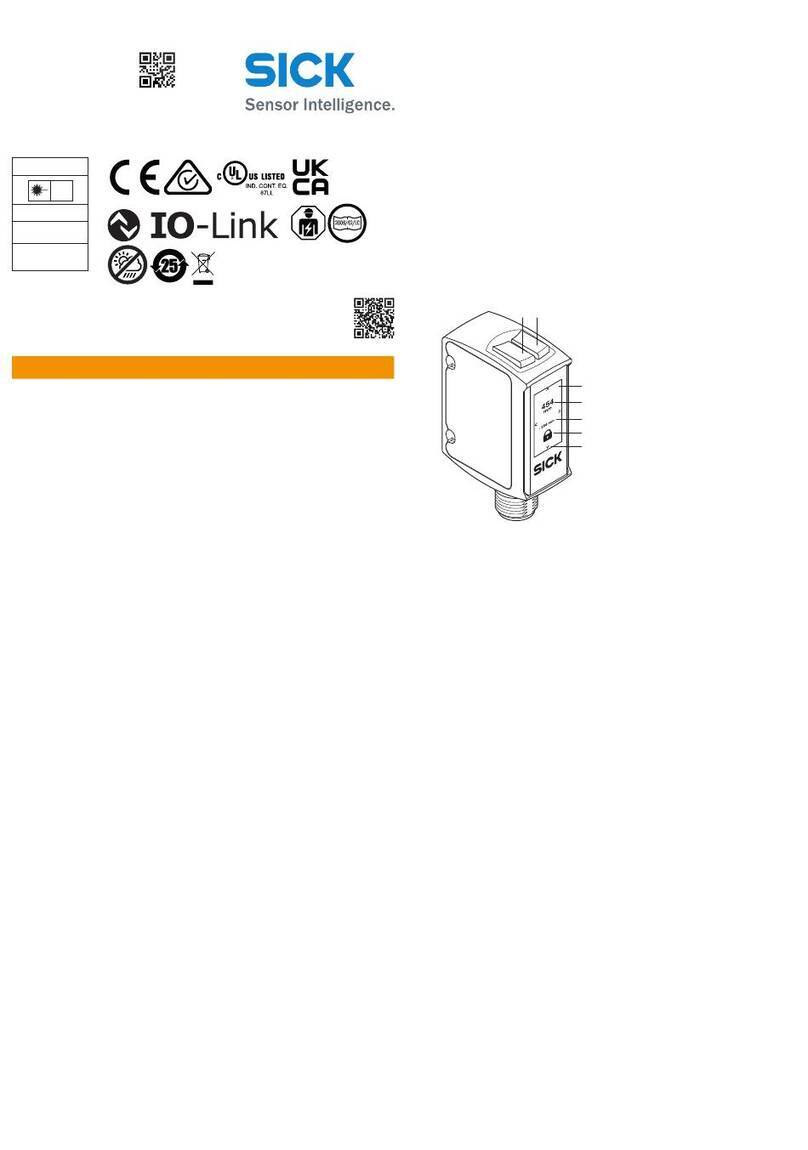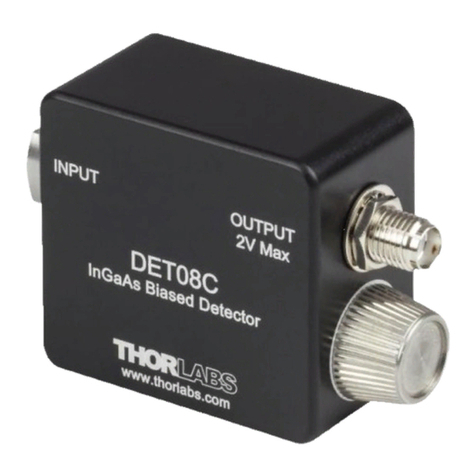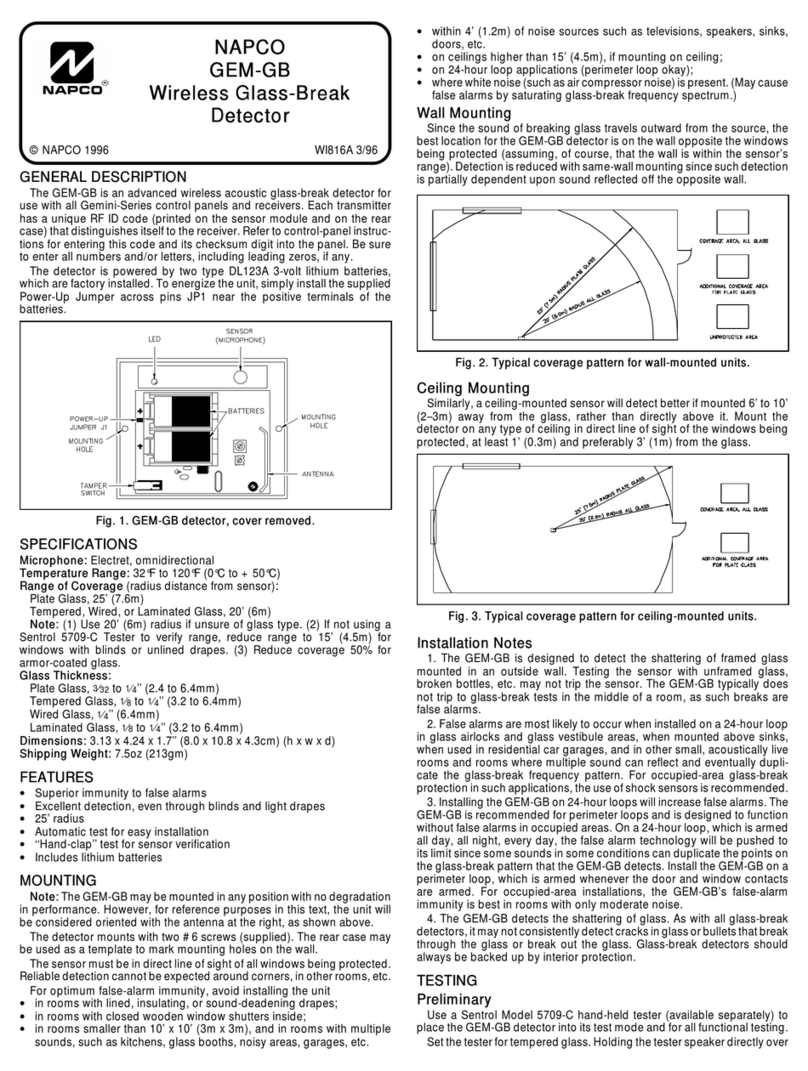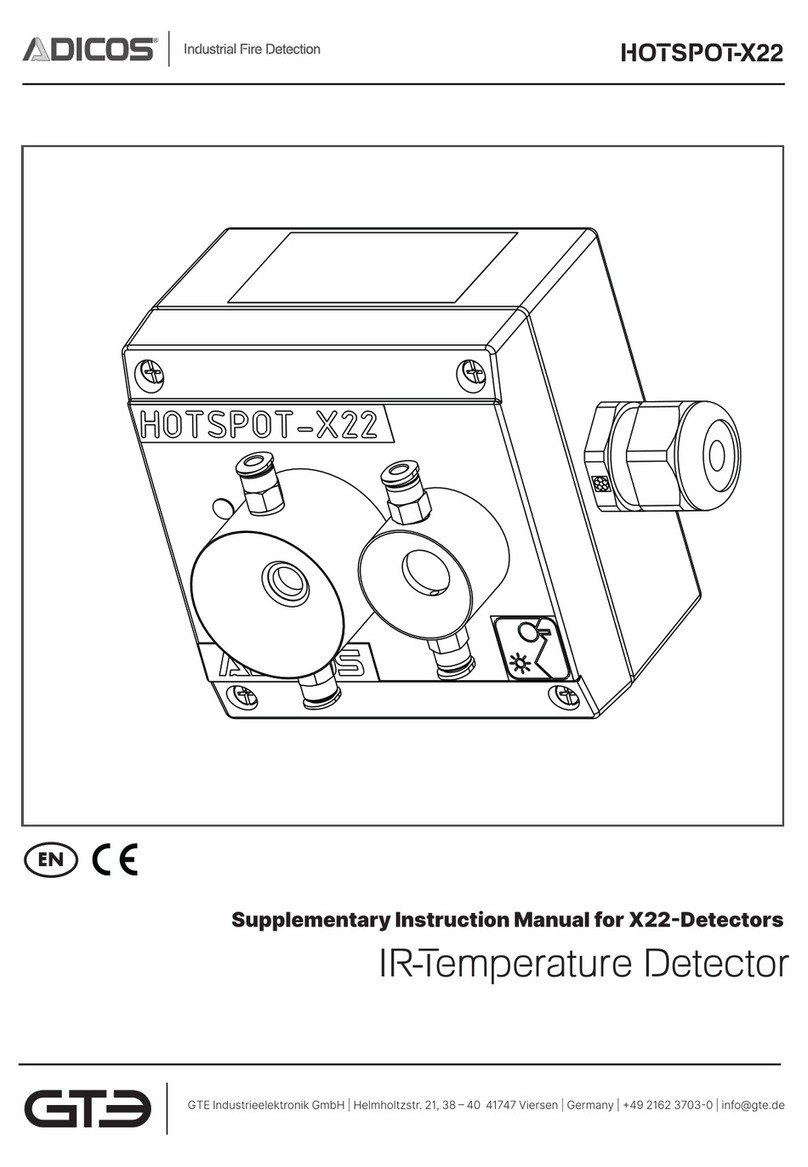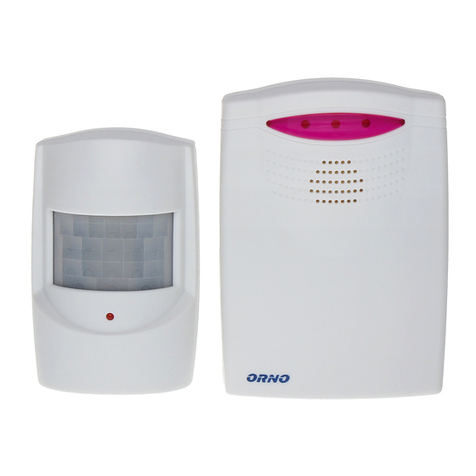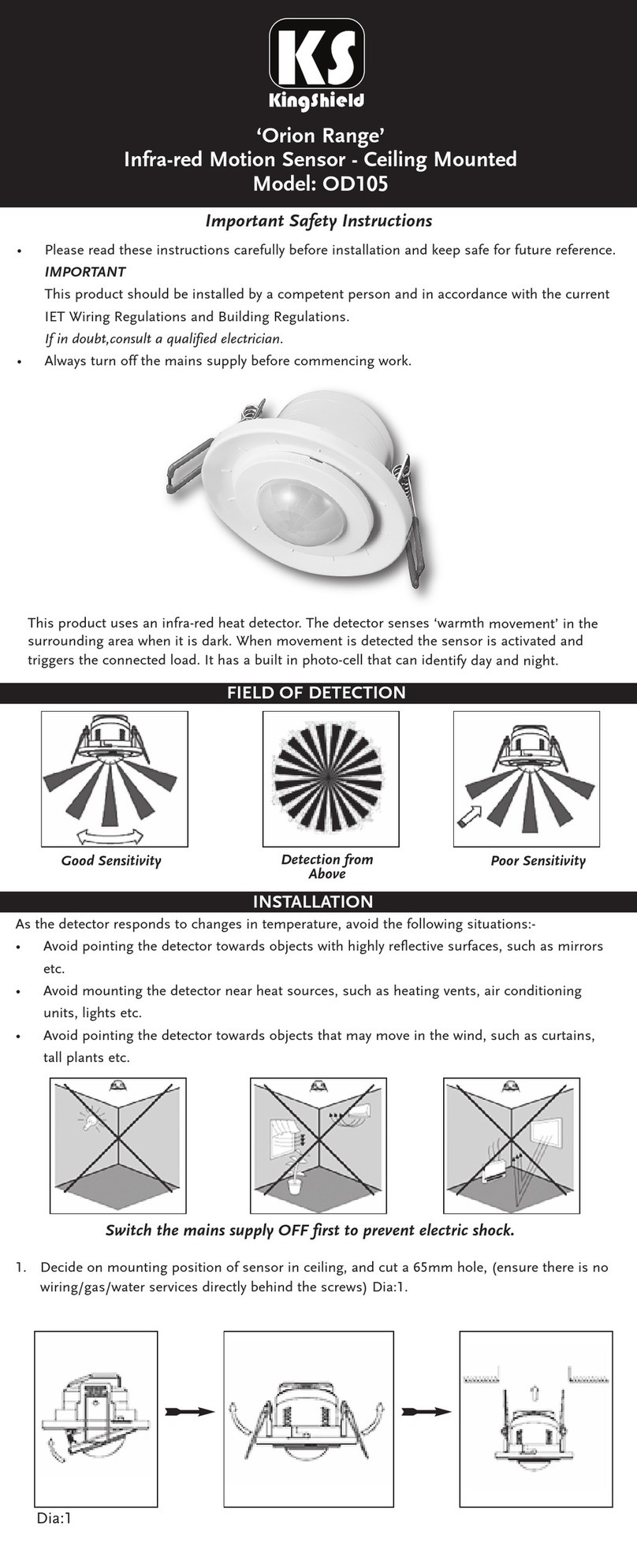WIRE CONNECTIONS DETECTOR SETTINGS
Terminal 1 - Marked - (GND)
Connect to ground of the control panel.
Terminal 2 - Marked + (+12V )
Connect to the positive Voltage output of 8.2 ~ 16Vdc source.
Terminals 3 & 4 - Marked TAMPER
Connect these terminals to a 24hour normally closed protective zone in the panel.
Terminal 5 - Marked EOL
End of line option.
Terminals 6 & 7 - Marked RELAY
These are the output relay contacts of the detector.
Connect to the control at zone input.
Switch 1: LED Control
Position Right – ON - LEDs ENABLE
The RED LED will activate when the detector
is in alarm condition.
Position Left – OFF - LEDs DISABLE
Note: the state of the switch “LED” does not
affect the operation of the relay.
Switch 2: PULSE count for PIR.
Position Left – OFF. High sensitivity
2 PULSES - for normal stable environment.
Position Right – ON. Low sensitivity
3 PULSES - for harsh environments.
Switch 3: MW range control according to the
room size.
Position Left – OFF – Long
For room size 10m – 18m.
Position Right – ON – Short
For room size 5m – 9m.
Switch 4: the PET Immune function
Position Right - ON - Immunity up to 15 kg
Position Left - OFF - Immunity up to 25 kg
RANGE ADJUSTMENT
PIR SENSITIVITY
Use the Potentiometer marked “PIR” to adjust
the detection sensitivity between 15% and
100%, according to walk test in the protected
area.
Factory setting is 57%.
MW SENSITIVITY
The “MW” potentiometer adjusts the detection
sensitivity of Doppler between 40% and 100%
(factory set to 65%).
Rotate the potentiometer clockwise to
increase sensitivity.
Rotate the potentiometer counter- clockwise
to decrease sensitivity.
TESTING THE DETECTOR
Apply 12 Vdc power to the detector,
wait 2 minutes to finish the detector
warm up time. Conduct testing with the
protected area cleared of all people.
Walk test
1. Remove front cover.
2. Make sure that PULSE switch is in
position 1.
3. Make sure that LED switch is ON.
4. Replace the front cover.
5. Start walking slowly across the
detection zone.
6. Observe that the detector’s LED
lights whenever motion is detected.
7. Allow 5 sec. between each test.
8. After the walk test is completed, the
LED and PULSE jumpers may be
changed.
NOTE: Walk tests should be
conducted, at least once a year, to
confirm proper operation and coverage
of the detector.
www.sim-security.net

